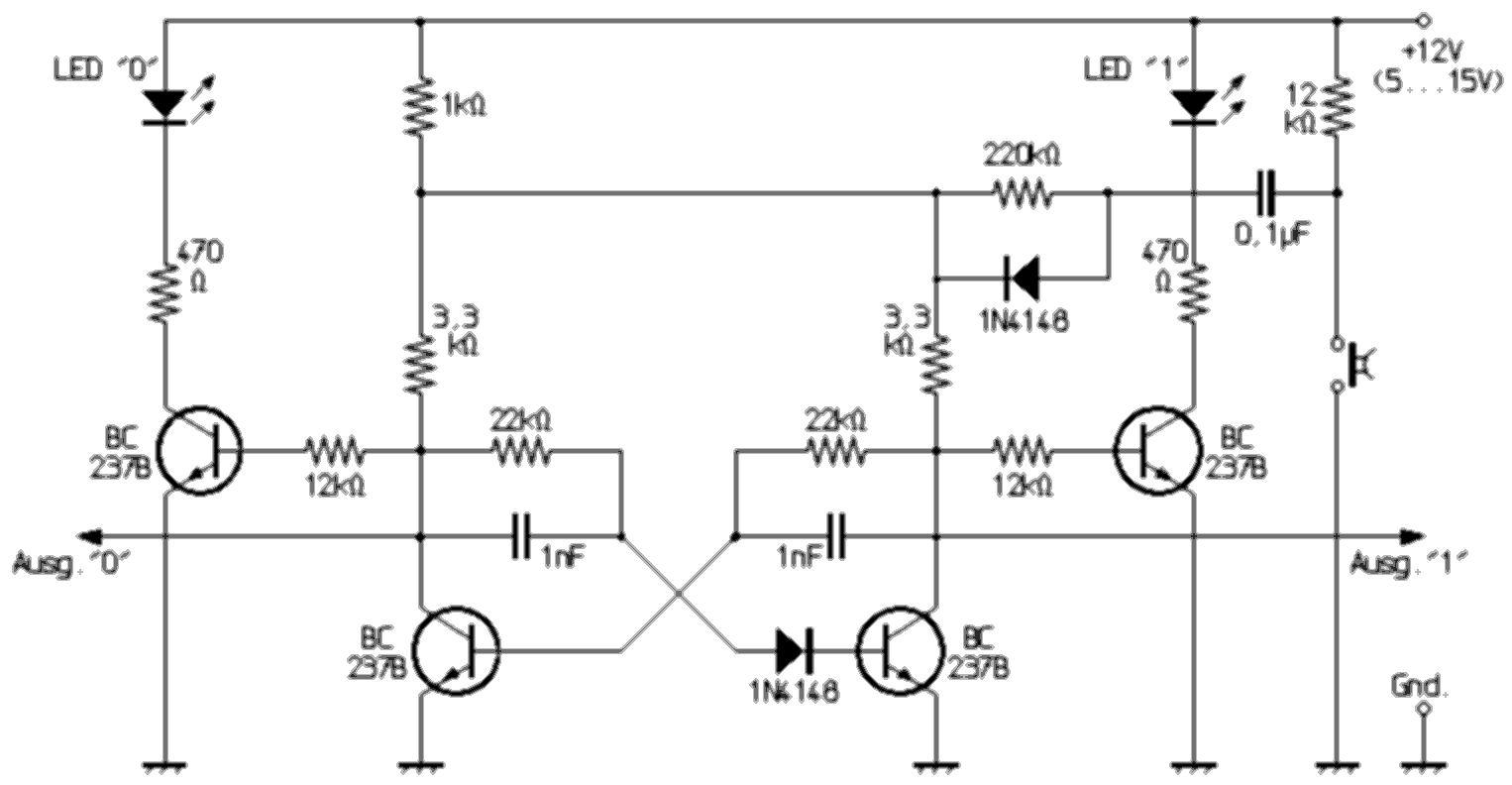Electronic toggle switch
Often switches are needed in electronic devices to turn a single function on or off, or switch between two operating states, such as buttons for sound filters (e.g., loudness) in stereo amplifiers. In amateur radio, one often finds a whole series of such functions, e.g. the switch-on of a noise limiter or the possibility to switch between high and low transmission power. In self-construction devices, this usually uses small toggle or slide switch. As with modern commercially available devices but you can also use a self-assembly devices, electronic buttons, in which the individual functions can be switched on and off independently. After pressing the respective button once, the desired function is switched on or switched over. After pressing it again, the circuit returns to the original state. With the following circuit, which is required once per push-button, exactly this can be achieved.

The core of the circuit is a toggle flip-flop, short named as T flip-flop. It is a circuit that used to be often used as a frequency divider or reducer, because pressing the button twice will cause a single on and off, four times will twice switching on and off. Through the diode in the one base line, always the transistor without this diode goes into the conducting state after being switched on. Thus, this electronic changeover switch has a defined switch-on state: after switching on, always LED 1 lights up. If the button is pressed, it goes out and LED 2 starts to light up. After pressing the push button again, the switch-on state is restored.
With regard to the control of external functions, the explanations given for the below presented pushbutton set with memory function apply analogously. If only one light-emitting diode is required to display the operating state, the respective control circuit for the other light-emitting diode consisting of 12kΩ resistor and 470Ω resistor and one transistor can be dispensed with.